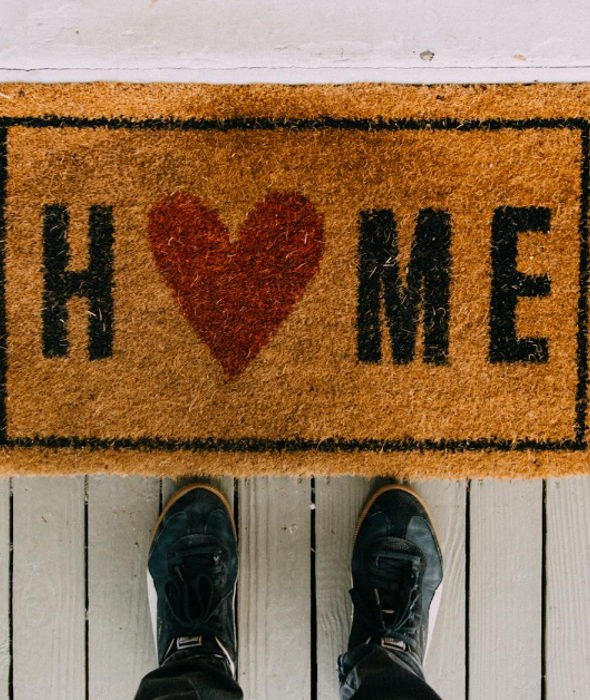
Share this Post
Subscribe

Need help with your money or investments? Book a consultation to learn more about working together.
What's a "Normal" Down Payment for Buying a House?
[Prefer to listen? You can find a podcast version of this article here: E217: What's a "Normal" Down Payment for Buying a House?]
Are you dreaming of buying a house but aren't sure how much you need to save for a down payment?
When it comes to buying a house, the down payment plays a big role in the overall cost and financing options available to you. But what is the ideal down payment amount? Is it 20% as commonly believed, or can you get away with a smaller amount?
There are some myths as well as pros and cons of different down payment percentages. Whether you're a first-time homebuyer or looking to upgrade, understanding your option for a down payment will help you make informed decisions and find the right plan for your situation.
Importance of a down payment
The down payment is an important factor when it comes to purchasing a house. It is the initial amount of money you pay upfront, which reduces the mortgage amount you'll need to borrow. A larger down payment means a smaller loan, lower monthly payments, and potentially better interest rates.
One of the main reasons why a down payment is important is that it demonstrates your commitment to homeownership. Lenders see a higher down payment as a sign of financial stability and responsibility, making you a more attractive borrower. It also helps you build more equity in your home.
But how much should you aim for when saving for a down payment?
Factors to consider when determining your down payment
Several factors come into play when deciding on the ideal down payment for your home purchase. While the traditional rule of thumb has been 20% of the home's purchase price, it may not be feasible or necessary for everyone.
- Your Financial Situation: Assess your current financial situation, including your income, savings, and debts. Consider your monthly budget and how much you can comfortably allocate towards a down payment without compromising your overall financial stability. For example: don't drain your emergency fund to buy a house. If you need to go with a smaller down payment to preserve your emergency fund, this is a reasonable option.
- Mortgage Requirements: Different lenders have varying requirements for down payments. Some may require a minimum percentage, while others offer more flexible options. Research and compare lenders to find the ones that align with your financial goals and offer favorable terms.
- Home Price and Location: The price and location of the home you intend to purchase play a significant role in determining your down payment. Higher-priced homes generally require larger down payments, while certain areas may have specific loan programs or assistance options that can help reduce the upfront cost.
- Loan Type: The type of loan you choose will also impact your down payment. Conventional loans typically require a higher down payment, while government-backed loans such as FHA loans offer more lenient requirements. Understanding the different loan options available to you is essential in determining the ideal down payment.
By considering these factors, you can determine a down payment amount that aligns with your financial capabilities, goals, and the specific requirements of your home purchase.
The traditional 20% down payment myth
It's a common belief that a 20% down payment is the gold standard when it comes to buying a house. This misconception has led many potential homebuyers to believe that they need a substantial amount of savings before they can even consider homeownership.
While a 20% down payment does have its advantages, it is not the only option available, nor is it always necessary. In reality, the average down payment for homebuyers in the United States is lower.
According to data from the National Association of REALTORS®, the typical downpayment for first-time buyers was 8%, while the typical downpayment for repeat buyers was 19%.
The 20% down payment myth originated from the conventional loan requirements set by Fannie Mae and Freddie Mac, two government-sponsored enterprises. These entities typically require a 20% down payment to avoid private mortgage insurance (PMI). However, there are other loan options and programs available that allow for lower down payments and still provide affordable financing.
Different loan options and their down payment requirements
When it comes to financing your home purchase, it's essential to explore the various loan options available and understand their down payment requirements. Here are some common types of loans and their associated down payment percentages:
- Conventional Loans: Conventional loans are not insured or guaranteed by the government. They typically require a down payment of 3% to 20% of the home's purchase price, depending on the lender's requirements and your creditworthiness.
- FHA Loans: Federal Housing Administration (FHA) loans are government-backed loans that offer more lenient requirements, making homeownership more accessible for first-time buyers. FHA loans require a minimum down payment of 3.5% of the purchase price.
- VA Loans: Veterans Affairs (VA) loans are available to eligible veterans, active-duty service members, and surviving spouses. These loans do not require a down payment.
- USDA Loans: United States Department of Agriculture (USDA) loans are designed for low-to-moderate-income borrowers in rural areas. They offer 100% financing, meaning no down payment is required.
These are just a few examples of the loan options available. It's important to research and compare lenders to find the best loan program for your specific financial situation and homeownership goals.
Pros and cons of making a larger down payment
While a larger down payment can have its advantages, be sure to weigh the pros and cons before deciding on the ideal amount for your home purchase. Here are some key considerations:
Pros:
- Lower Monthly Payments: A larger down payment means a smaller loan amount, resulting in lower monthly mortgage payments.
- Better Interest Rates: Lenders often offer better interest rates to borrowers with larger down payments, as they pose less risk.
- Avoiding PMI: Private Mortgage Insurance (PMI) is typically required for borrowers with a down payment below 20%. Making a larger down payment can help you avoid this additional cost. However, PMI is typically not very expensive, so it should not necessarily be avoided at all costs.
Cons:
- Tying Up Cash: Putting a significant amount of money towards a down payment means less cash available for other financial goals or emergencies.
- Delayed Homeownership: Saving for a larger down payment may take longer, delaying your plans of becoming a homeowner.
- Opportunity Cost: Consider the potential returns you could earn if you invested the money elsewhere instead of putting it towards a larger down payment.
By carefully evaluating these pros and cons, you can determine the right balance that suits your financial situation and long-term goals.
Low down payment programs and assistance options
If saving for a larger down payment seems challenging, don't worry. There are several low down payment programs and assistance options available to help make homeownership more attainable. Here are some examples:
- FHA Loans: As mentioned earlier, FHA loans require a minimum down payment of 3.5%, making them an attractive option for first-time buyers, especially those with lower credit scores since FHA credit score requirements are more lenient than other programs.
- Conventional 97 Loan: This loan program allows for a down payment as low as 3%, making it a viable alternative to conventional loans with higher down payment requirements.
- Down Payment Assistance Programs: Many states, cities, and non-profit organizations offer down payment assistance programs to help qualified buyers cover part or all of their down payment and closing costs. Search for "down payment assistance programs" along with your state and/or city to find resources specific to your location.
Researching and exploring these programs can help you find additional support and resources to achieve your homeownership dreams.
How to save for a down payment
Saving for a down payment requires discipline and planning. Here are some tips to help you save effectively:
- Set a Goal: Determine how much you need to save and set a realistic timeline for achieving your down payment goal.
- Create a Budget: Review your finances and create a budget that allows for regular savings towards your down payment. Cut back on unnecessary expenses and redirect those funds toward your savings.
- Automate Savings: Set up automatic transfers from your checking account to a separate savings account dedicated to your down payment. This will help you save consistently without relying on willpower alone.
- Explore Additional Income Streams: Consider taking on a side hustle or freelance work to boost your income and accelerate your savings, even if it's temporary.
- Reduce Debt: Pay down high-interest debts to free up more money for your down payment savings.
Remember, every dollar counts. Saving consistently and staying focused on your goal will bring you closer to homeownership.
Tips for lowering your down payment
There are a few strategies you can use to potentially lower your down payment:
- Shop Around for Lenders: Compare lenders and their down payment requirements to find the ones that offer the most favorable terms.
- Negotiate Purchase Price: Work with your real estate agent to negotiate a lower purchase price, which can result in a lower down payment.
- Seller Concessions: Sometimes, sellers may be willing to contribute towards your closing costs or down payment. Explore this possibility during the negotiation process.
Work with professionals who can guide you through the process and help you make informed decisions.
Finding the ideal down payment for your home purchase
Determining the ideal down payment for buying a house is not a one-size-fits-all approach. It depends on your financial situation, loan options, home price, and personal goals. While a 20% down payment may be ideal for some, it is not the only option.
By considering your specific circumstances and exploring different loan programs, you can find a down payment amount that aligns with your financial capabilities and homeownership aspirations. Remember to research, plan, and save diligently to make your dream of owning a home a reality.

